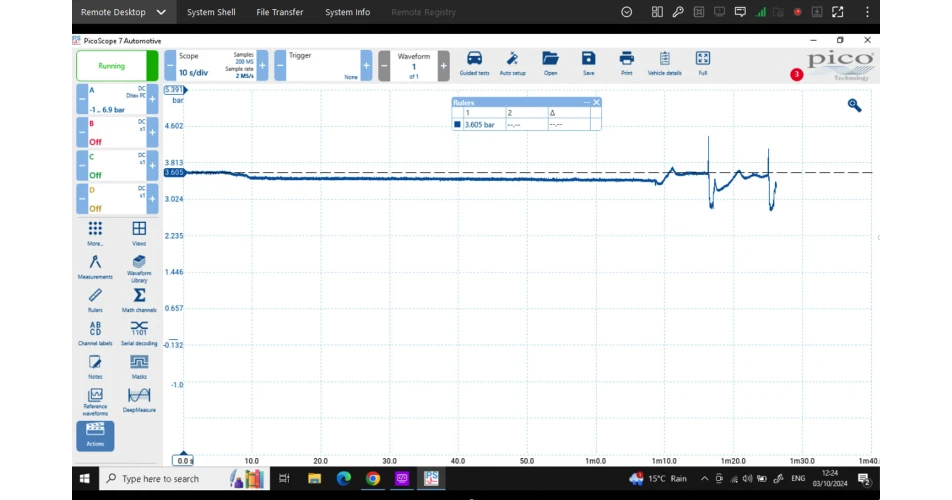Now and then, we meet a vehicle from an era that had little in the way of digital diagnostics. A recent Autobiz Helpline case came our way, with just what we needed to prove that old technology could benefit from new diagnostics.
A garage was faced with a Ford Capri 2.8i V6, with mechanical fuel injection. The Capri was running very poorly, and it was hard to start. The symptoms indicated a lean running condition.
This fuel system was designed by Bosch. The K-Jetronic was fitted to many vehicles in that era. Without the ability to serially diagnose this vehicle, it came down to basic mechanical testing.
This system is continuous injection, and utilizes a change in control pressure to vary the fuel delivery. This means that pressure diagnostics is vital.
We employed the very latest technology with Picoscope, and a Ditex pressure transducer, to measure fuel system pressure.
The system pressure was as expected, 72.5 Psi, delivered via the roller cell pump at the fuel tank. This is regulated by the primary pressure regulator on the metering head.
Control pressure, between the metering head and the warm-up regulator, was the next to be checked. This pressure varies with temperature and engine load. During start-up, the warm-up regulator is a vital component in controlling fuel delivery, until the engine is at normal operating temperature. The warm-up regulator utilizes a combination of a vacuum, for engine load, and a Bi-metallic strip, for temperature adjustment. Warm Engine control pressure should be in the range of 3.4 to 3.8 Bar.
While the engine is cold, the pressure will be lower, and will steadily increase during the warmup period. Under acceleration, when the vacuum drops, the control pressure will also drop.
Using a scope to see these trends in pressure over time, greatly improves the diagnostic process. The scope trace confirmed the proper operation of the warm-up regulator.
All that was left to do was to adjust the position of the air flap. This is achieved with a small allen screw in the top of the metering head. This was adjusted until the CO was set at 3.5%.
After a road test, the vehicle performed very well, and was returned to the happy customer.
To see or download this article click
here. There are lots more Tech Tips to view, and they are all searchable, on
TechTips.ie.
To join the Autobiz Helpline, call 01-905-9500, and then press 2, for further information.
 This scope trace shows the control pressure reaction to acceleration, confirming the operation of the warm-up regulator
This scope trace shows the control pressure reaction to acceleration, confirming the operation of the warm-up regulator
